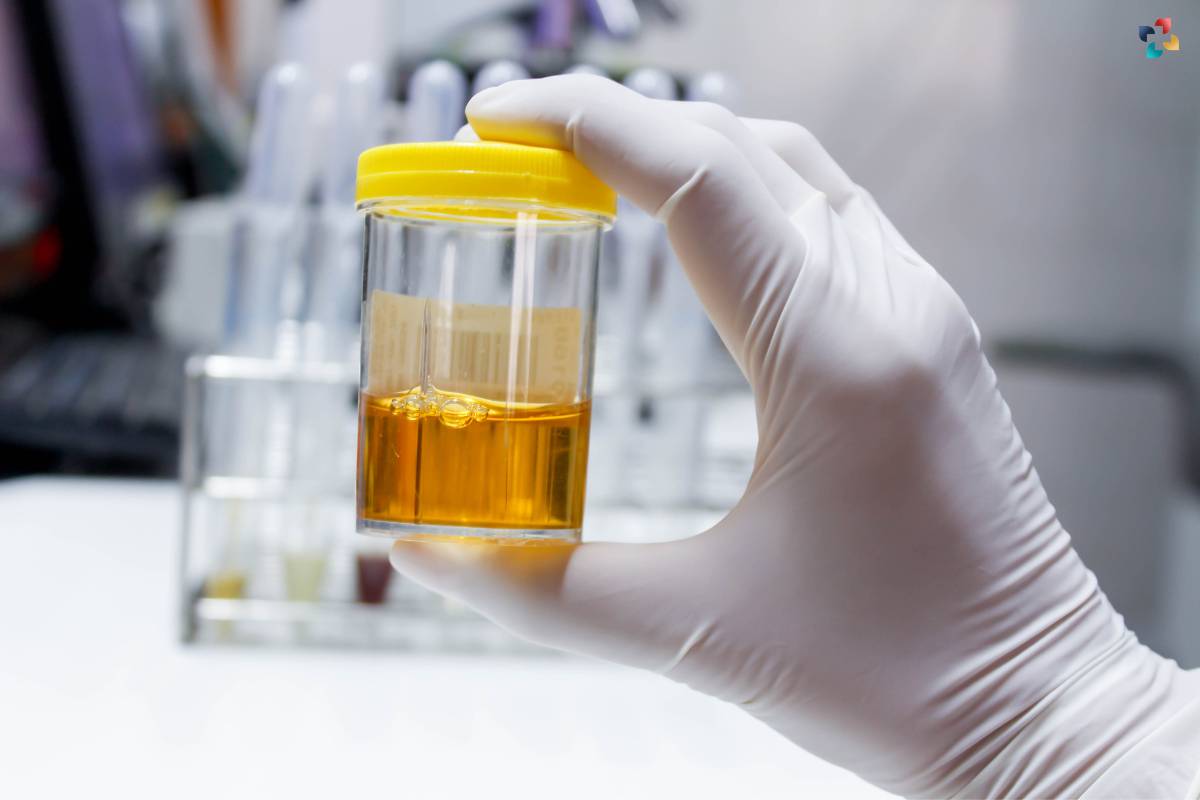Hydration levels affect the color of your urine. Normal urine color is from transparent to pale yellow. But some things can change the color of the urine. Foods like blackberries, beets, fava beans, and some medicines can change the urine color to orange or greenish blue. Also, an unusual problem can change the color of urine. For a person suffering from urinary Tract Infection (UTI), the color of urine can change to milky white. Other health issues like kidney stones and some specific cancers will make the urine red in color due to blood.
The most normal color which should be of urine is pale yellow or transparent. Dehydration causes the color of urine to turn darker brown. Also, an important note to consider: Never ever ignore the dark red color of the urine as it indicates kidney or bladder issues.
The human body explains a lot of things via the symptoms it depicts. We need to be observant enough for noticing the symptoms and signals it sends to us.
Here are 7 spectrum Color of Urine:
The color of urine is influenced by several factors, including hydration, diet, medications, and certain medical conditions. Generally, urine color falls within a spectrum ranging from pale yellow to dark amber. The color of urine is primarily attributed to a pigment called urochrome, which results from the breakdown of hemoglobin and the metabolism of certain foods.

1. Pale Yellow
The pale-yellow color of urine is often considered to be a sign of proper hydration and good health. This shade indicates that the body is well-hydrated, flushing out waste products effectively. It’s important to note that certain vitamins and supplements can also impact the color, giving it a brighter or more fluorescent hue.
2. Transparent or Clear
Extremely pale or clear urine may indicate overhydration, causing the body to eliminate excess water. While hydration is essential, excessive consumption of water without balancing electrolytes can lead to imbalances and potentially dilute essential nutrients in the body.
3. Dark Yellow
As urine deepens to a darker yellow, it may indicate mild dehydration. This color change is a signal that the body requires more fluids to function optimally. Increasing water intake can help bring the color back to a healthier shade.
4. Amber
Dark amber or honey-colored urine often signals significant dehydration. It’s a sign that the body is lacking adequate water, which can impact various bodily functions, including kidney filtration and waste elimination.
5. Orange
Urine with an orange tint can be a cause for concern. It may be linked to certain medications, B-vitamin supplements, or even the consumption of foods rich in beta-carotene (such as carrots and sweet potatoes). However, persistent orange urine could be indicative of liver or bile duct issues and should not be ignored.
6. Pink or Red
The presence of red or pink urine can be alarming, as it might suggest the sight of blood. While innocent causes such as consuming beets or certain medications can lead to this color change, it’s crucial to rule out more severe conditions like urinary tract infections, kidney stones, or even kidney disorders. Consulting a doctor is highly recommended in such cases.
7. Blue or Green
While uncommon, blue or green urine can result from certain medications, genetic factors, or ingesting dyes found in certain foods. However, these colors can also be indicative of a rare genetic disorder or a urinary tract infection. Seeking medical attention is advised if the color persists and is not linked to dietary factors.
Implications for Different Body Systems
1. The color of urine can offer insights into the state of various bodily systems

- Kidneys:
The kidneys play a pivotal role in filtering waste and maintaining fluid balance. Dark and concentrated urine can be an early sign of kidney dysfunction, indicating a need for increased water intake to support kidney function.
- Liver and Bile Ducts:
Orange urine can point toward potential liver or bile duct issues. The liver is responsible for processing waste and toxins, and any disruption in its function can lead to changes in urine color.
- Urinary Tract:
Red or pink urine can result from irritation or inflammation in the urinary tract. This could stem from infections, kidney stones, or even more serious conditions that need prompt medical attention.
- Hydration Levels:
The spectrum of urine colors underscores the importance of maintaining proper hydration. Inadequate water intake can lead to darker urine, signaling the need to hydrate adequately to support overall health.
2. When to Seek Medical Attention
While occasional changes in urine color might be linked to diet or certain medications, persistent or unusual color changes should not be ignored. If you notice any of the following, it’s advisable to consult a medical professional:
- Blood in Urine:
Pink, red, or brown urine that cannot be attributed to dietary factors warrants immediate attention, as it might indicate serious underlying conditions.
- Persistent Dark Urine:
If your urine remains consistently dark amber or brown, it’s a sign of potential dehydration or kidney issues.
- Unexplained Changes:
Sudden and unexplained changes in urine color, especially when accompanied by pain, discomfort, or fever, should be evaluated by a doctor.
3. Restoring the Healthy Color of Urine
Maintaining the appropriate color of urine involves staying hydrated and being mindful of certain dietary choices. Here are some strategies to consider:

- Hydration:
Drinking an adequate amount of water throughout the day is essential to ensure that your body functions optimally and your urine remains within a healthy color range.
- Balanced Diet:
Consuming a balanced diet rich in fruits, vegetables, and whole grains can contribute to healthy urine color. Avoid excessive intake of foods and beverages that can artificially alter urine color.
- Medication Review:
If you suspect that a change in urine color is linked to medication, consult your healthcare provider to explore alternative options.
- Medical Guidance:
When in doubt about changes in urine color, it’s always best to consult a doctor. They can provide personalized advice based on your health history and current symptoms.
Conclusion:
The color of urine serves as an invaluable indicator of our body’s inner workings. Ranging from pale yellow to dark amber, urine color provides insights into hydration levels, kidney function, and potential health issues. Monitoring changes in urine color and recognizing when to seek medical attention can play a crucial role in maintaining our overall well-being. By staying hydrated, maintaining a balanced diet, and promptly addressing any concerning color changes, we can take proactive steps toward ensuring that our urine color remains a reflection of our good health. Remember, your urine color can speak volumes about your body’s condition—listen carefully and respond appropriately.
Also Read: 11 Effective Tips for Staying Hydrated and Avoiding Dehydration







